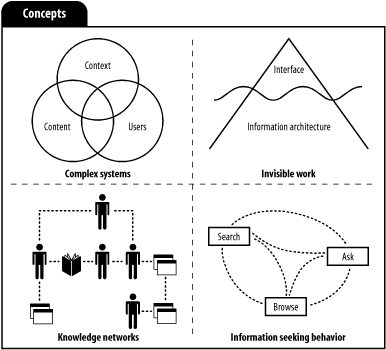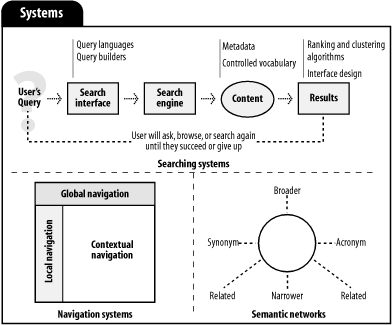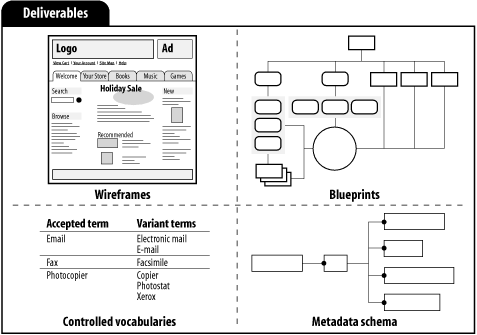Information architecture lives beneath the surface. Users rarely look at a web site and exclaim, “Wow, check out this brilliant classification scheme!” In fact, much of our work is intangible; many people who are directly involved in web design have only a superficial understanding of information architecture. They may recognize the need for clear labels in a navigation bar, but have no clue how a controlled vocabulary could improve the search experience. If you can’t see it, touch it, taste it, or smell it, it doesn’t exist.
This invisibility is fine with respect to users. We don’t want to force users to see our hard work; we want them to complete tasks and find information in blissful ignorance of our labors. But invisibility is a major problem when it comes to justifying our existence to colleagues and making the case for investments to decision makers. We must constantly work to help people see the complexity of the challenges we face and the long-term value of our solutions.
We must find ways to articulate the key concepts of our craft, helping people to understand the sophisticated nature of user needs and behavior. We must show the interconnections between people and content that underpin knowledge networks, and explain how these concepts can be applied to transform static web sites into complex adaptive systems (Figure 1-4 [6]).
We must be prepared to dive into detail, identifying and defining the component systems that support our sites (Figure 1-5). We must show how semantic networks can provide a foundation for fluid navigation. And we must convince our clients and colleagues that an effective searching experience requires not just a good engine or a nice interface, but a carefully integrated system of interdependent parts.
Finally, we must be ready to produce concrete deliverables (Figure 1-6). We must learn to render our constructs of semantics and structure in clear and compelling ways. In short, we must help people to see the invisible.
In this book, we explain the concepts, systems, and deliverables of information architecture. By drawing upon words, stories, metaphors, and images, we’ve done our best to bring our work to life. However, no single collection of words and images can serve all purposes. A key to the craft of information architecture is understanding how to shape your message for your audience. This requires some sense of what your managers, clients, and colleagues want to hear and how they want to hear it.
Did we mention that information architecture involves a little magic? How else would you read minds and make the invisible visible? So put on a black hat, bring along your sense of humor, and prepare to enter the secret society of information architects.
[6] This series of images was designed by Myra Messing Klarman of Studio Mobius (http://studiomobius.com/).
Get Information Architecture for the World Wide Web, Second Edition now with the O’Reilly learning platform.
O’Reilly members experience books, live events, courses curated by job role, and more from O’Reilly and nearly 200 top publishers.




